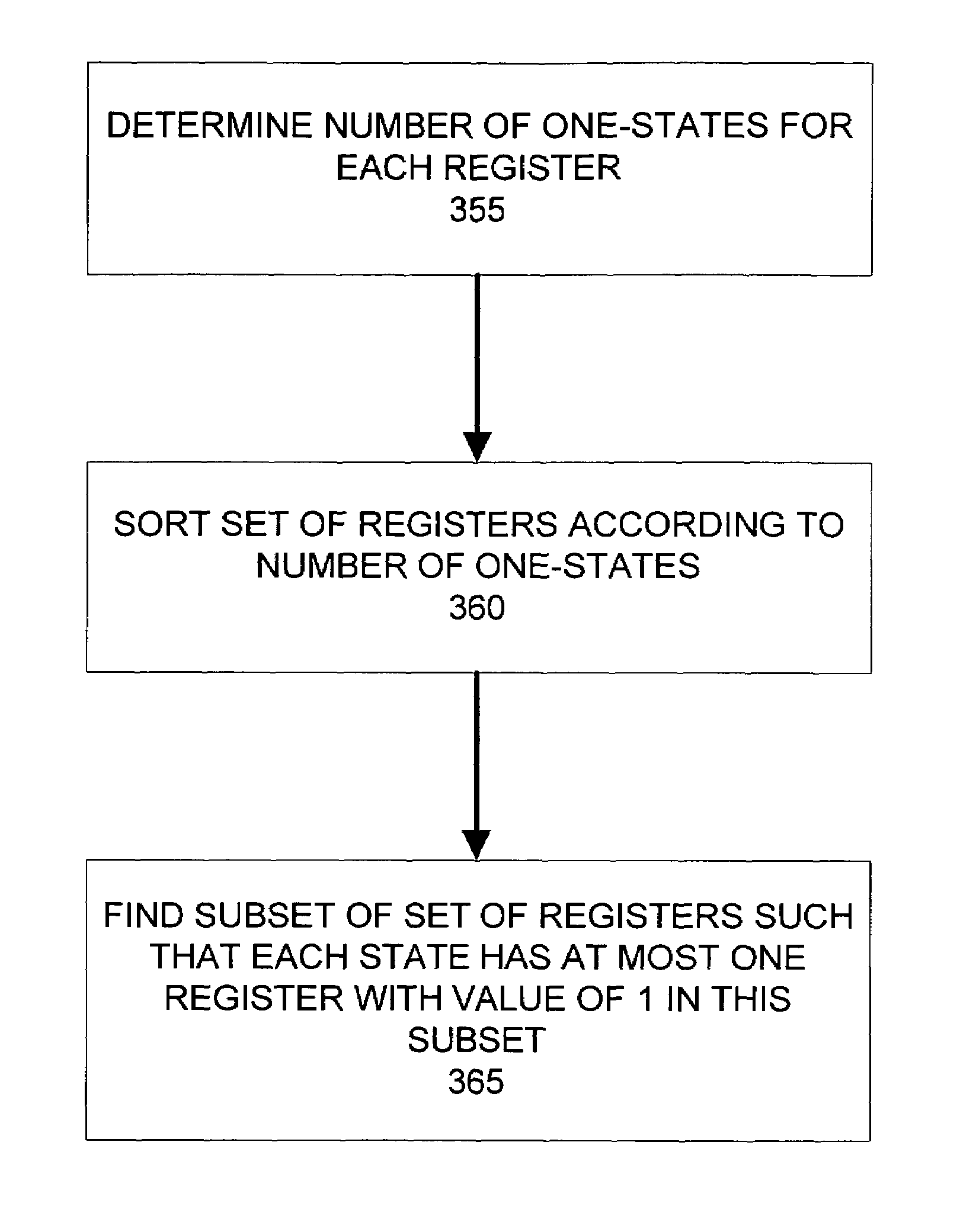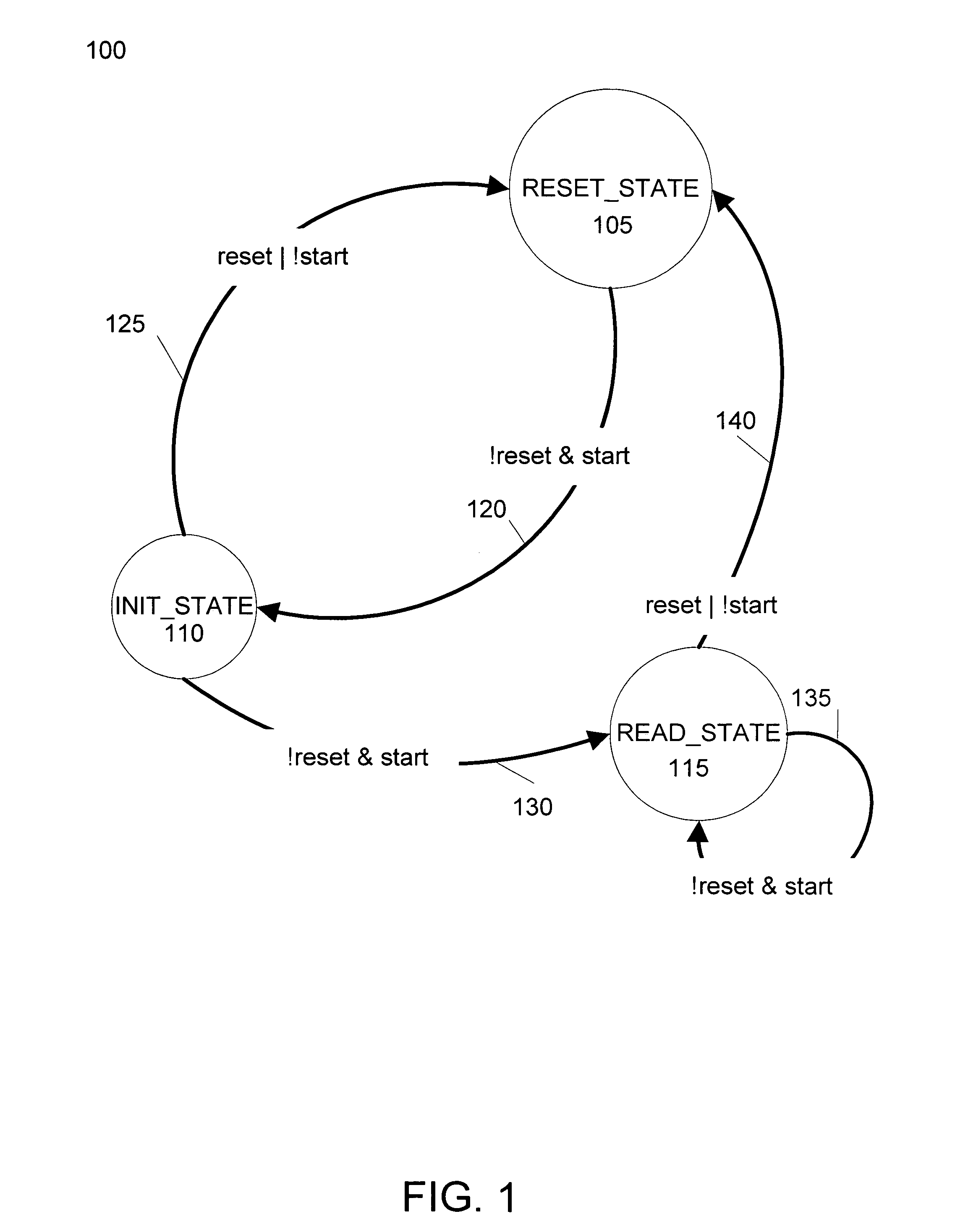State machine recognition and optimization
a state machine and optimization technology, applied in the field of programable devices, can solve the problems of state machines that are sometimes not recognized by the compilation software and the hardware implementation is typically much less efficient, so as to reduce the amount of state transition and output logic, and optimize the user design
- Summary
- Abstract
- Description
- Claims
- Application Information
AI Technical Summary
Benefits of technology
Problems solved by technology
Method used
Image
Examples
Embodiment Construction
[0018]FIG. 1 is a state machine diagram illustrating the operation of an example state machine 100. State machine 100 includes three states: reset_state, 105; init_state, 110; and read_state, 115. State machine 100 includes transitions 120, 125, 130, 135, and 140. In this example, transitions between these states are controlled by Boolean expressions of two state machine inputs: reset and start. For example, the state machine 100 changes from reset_state 105 to init_state 110 when the reset input is 0 and the start input is 1. Although not shown in FIG. 1, the reset input may be asynchronous, so that the reset input can initiate a transition to the reset_state at any time, regardless of a clock signal. The other inputs can be synchronous, so that all other state transitions are synchronous with the clock signal.
[0019]When state machines are implemented in hardware, each state is associated a value in one or more registers, latches, flip-flops, or other devices capable of storing inf...
PUM
 Login to View More
Login to View More Abstract
Description
Claims
Application Information
 Login to View More
Login to View More - R&D
- Intellectual Property
- Life Sciences
- Materials
- Tech Scout
- Unparalleled Data Quality
- Higher Quality Content
- 60% Fewer Hallucinations
Browse by: Latest US Patents, China's latest patents, Technical Efficacy Thesaurus, Application Domain, Technology Topic, Popular Technical Reports.
© 2025 PatSnap. All rights reserved.Legal|Privacy policy|Modern Slavery Act Transparency Statement|Sitemap|About US| Contact US: help@patsnap.com



